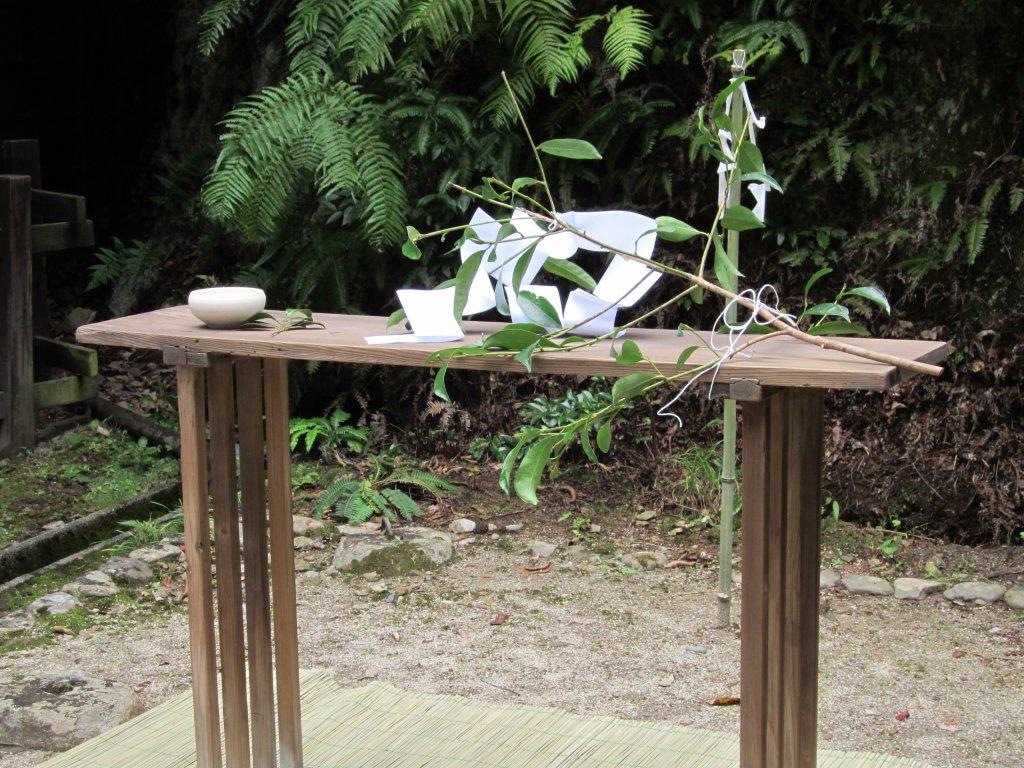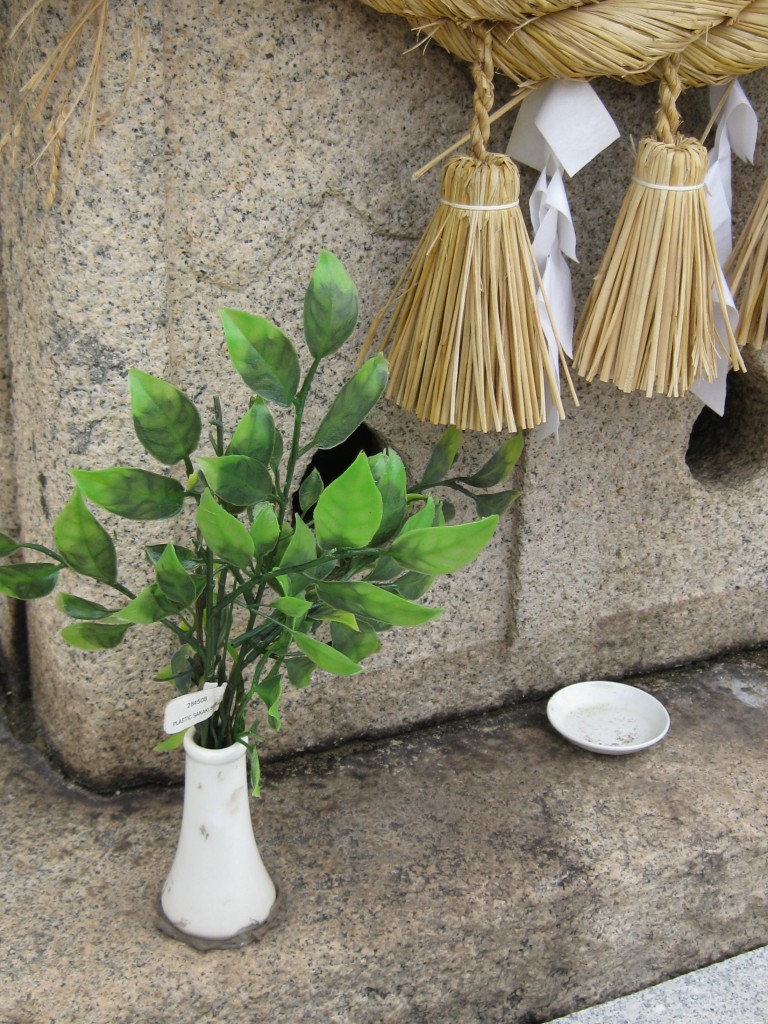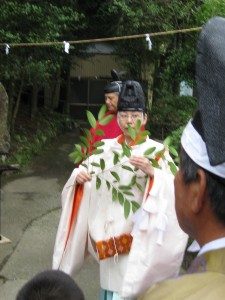
I’ve written before of the sacred nature of the sakaki tree, but what’s so special about it? It’s Shinto’s holy tree, but I’ve never found a satisfactory answer as to why. Sure, it’s an evergreen, and therefore a symbol of immortality, but then so are lots of other trees – none more so than the Japanese pine or cedar, both more striking in their ways than the sakaki.
The standard answer is that sakaki was used in the Rock Cave myth, when it was decorated as part of the festivities to lure Amaterasu out of her retreat. However, the myth was likely written to justify an existing practice, so that’s not very helpful.
To see if I could shed more light on the matter, I turned to the internet and found that Wikipedia carries some intriguing information. Could it be that in the linguistic suggestion that it was a border tree lies a clue? Did it perhaps border sacred areas at one time, or one particularly sacred site…
****************************************************
Sakaki (Cleyera japonica) is a flowering evergreen tree native to warm areas of Japan, Korea and mainland China. It can reach a height of 10 m. The leaves are 6–10 cm long, smooth, oval, leathery, shiny and dark green above, yellowish-green below, with deep furrows for the leaf stem. The bark is dark reddish brown and smooth.
The small, scented, cream-white flowers open in early summer, and are followed later by berries which start red and turn black when ripe. Sakaki is one of the common trees in the second layer of the evergreen oak forests.
Sakaki wood is used for making utensils (especially combs), building materials, and fuel. It is commonly planted in gardens, parks, and shrines.
Sakaki is considered a sacred tree in the Shinto religion along with other evergreens such as hinoki 檜 “Japanese cypress” and kansugi 神杉 “sacred cryptomeria”. In Shinto ritual offerings to the kami, branches of sakaki are decorated with paper streamers to make tamagushi.
Linguistic background
The Japanese word sakaki is written 榊 with a kanji character that combines ki 木 “tree; wood” and kami 神, depicting “sacred tree; divine tree”.
Sakaki 榊 first appears in the (12th century) Konjaku Monogatarishū, but two 8th-century transcriptions are 賢木 “sage tree” (Kojiki) and 坂木 “slope tree” (Nihon Shoki). Sakaki 賢木 or 榊 is the title of Chapter 10 in The Tale of Genji (ca. 1021).
The etymology of sakaki 榊 is uncertain. With linguistic consensus that the -ki suffix denotes 木 “tree”, the two most probable etymologies are either sakae-ki “evergreen tree” (from sakae 栄え “flourishing; luxuriant; prosperous”) or sakai-ki “boundary tree” (from sakai 境 “boundary; border”). Carr (1995:13) cites Japanese tradition and historical phonology to support the latter etymon.

Plastic sakaki: pretty strange for a nature religion one might think, but as ever in Japan the form's the thing


Would it be disrepectful to display a sakaki tree in my home as part of my decor?
No, sakaki grows naturally in various places so it’s not limited to sacred space…
why is sakaki considered sacred ?
Good question. One obvious attribute is that it is evergreen, and like the evergreen trees in ancient Europe it was therefore seen as having special power to last through the winter months with green leaves. Moreover, since it never loses its leaves like deciduous trees it became a symbol of the eternal world i.e. the world of spirits which unlike humans do not perish. However, why sakaki got singled out rather than pine or cypress I’m not entirely sure…